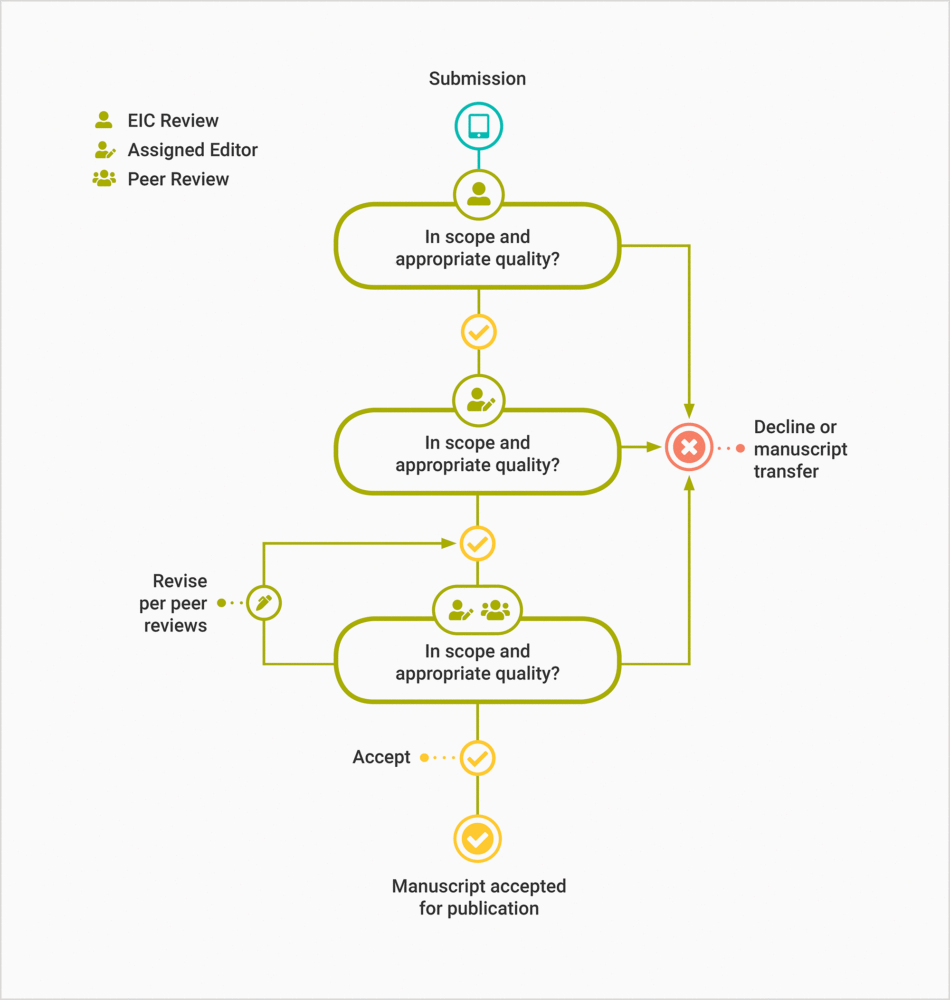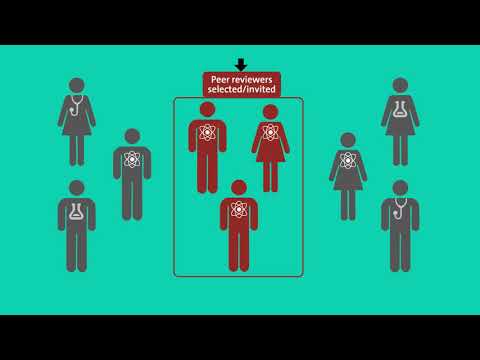Peer review is necessary to ensure the quality of scientific literature. From submission to published manuscript, learn more about the steps involved throughout the peer review process at ACS Publications.

Peer review is the process of scientific journals seeking the advice of experts in a particular field to help determine if a manuscript submission should be accepted. Those experts (known as reviewers) bring perspectives and subject knowledge different from those of the journal’s editors, from the authors, and each other as well. The collective knowledge of the reviewers and the editors provides the expertise necessary to decide whether to accept and publish a submission. Peer review is necessary to ensure the quality of scientific literature.
What are the Types of Peer Review?
Several systems have evolved for soliciting the opinions of experts on the quality of submitted manuscripts. In the most restrictive version, “double-blind” review, the authors are unknown to the reviewers, and the reviewers are unknown to the authors. Alternatively, in a “single-blind” review process, only the reviewers are anonymous to the authors. In open peer review, the least restrictive model, the reviewers are also known to the authors. Often, comments from reviewers and rebuttals from the authors are published along with the manuscript. Various versions of the submission may also be included. The expectation is that open peer review would yield more constructive and perhaps more discerning feedback. A major disadvantage is that fewer individuals are likely to be willing to review the work.
Most chemistry-related journals use a single-blind process. This provides the identity and affiliation of the author to the reviewers, but not vice versa. The “double-blind” process is considered difficult to implement because of the challenges associated with removing all means of identifying the authors. Scholars in a particular area know about each other’s work. What follows is an examination of the peer review from the single-blind perspective, although most of the discussion applies to all systems.
What are the Steps in the Peer-Review Process?
When a manuscript is submitted to a journal and meets all the submission criteria, then the journal’s editorial team makes an initial decision. They may decline the submission. They can also refer it to an editor who will move it toward a final decision, including accepting the manuscript for publication. Editors are generally assigned based on subject expertise, but sometimes workload and availability play a role. The assigned editor initiates the peer review process.

How are Reviewers Selected and Invited?
Assigned editors use several resources to select potential reviewers. A manuscript’s list of citations can serve as a means of identifying known experts in the field. Authors may sometimes provide a list of preferred reviewers along with their submissions for assigned editors to consider. A journal’s database of reviewers and authors is also a source of potential candidates. It includes information about reviewers, such as their history as a reviewer, availability, and the timeliness and quality of their reviews.
Reviewers with a range of expertise are invited to review a manuscript. This ensures all aspects of the manuscript are evaluated appropriately. Reviewers with multiple areas of expertise may contribute comments on the manuscript as a whole. Other may be asked focus on a specific aspect. The assigned editor should clearly tell the reviewer what is expected of them.
Once the assigned editor has identified suitable reviewers, they begin the peer review process. Then reviewers are invited to evaluate the manuscript. They are given several days to accept or decline the invitation. Those who decline are asked to provide names of other potential reviewers. Most journals seek to obtain feedback from two to four reviewers per article submission.
How Do Reviewers Receive Feedback?
After accepting an invitation to peer review, a reviewer is allowed anywhere between several days to two weeks (depending on the journal) to provide written comments. These include comments for the editor and comments shared with authors. Comments for the editor should be restricted to expressing concerns about potential ethical violations. They should not include comments on the quality of the manuscript.
Reviewers evaluate submissions based on how well the authors answered their research questions. Where the conclusions and implications appropriately derived from the results and findings? Were suitable techniques and methods used? Does the research advance the field? Reviewers also evaluate whether the arguments presented by the authors are sufficient and effective enough to inform and convince a typical reader of the value of the published work. Reviewers ensure the authors meet the standards of the discipline, the results and conclusions are warranted. Ultimately, this helps maintain the integrity of science.
How Do Editors Make Their Decisions?
The assigned editor will take the reviewer’s comments and assessments into account when deciding about a submission. Reviewer feedback is not the only factor in the decision process, but it is certainly a significant factor. Reviews are not “votes” that are tallied but are advised to the assigned editor about the suitability of the manuscript for a specific audience.
Once the assigned editor reaches a decision based on the peer reviews and other factors, the authors are notified of the decision, and completed reviews are sent with the decision letter.

ACS Reviewer Lab

